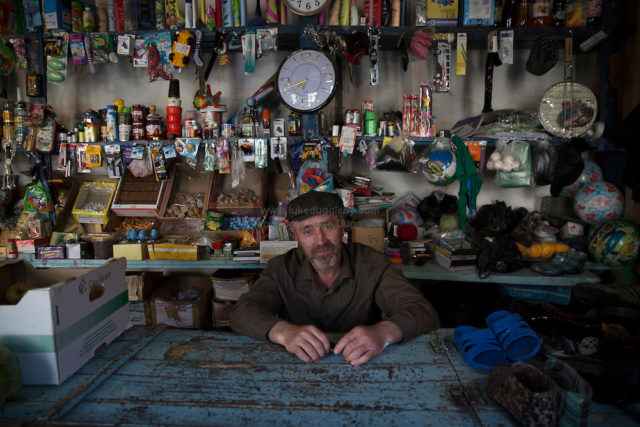
Russian Regions Face High Budget Deficits and Little Support From the Central Government
Publication: Eurasia Daily Monitor Volume: 17 Issue: 66
By:

The pandemic and the partially related collapse in oil prices will lead to the highest budget deficit in the Russian regions for the past 20 years, despite the support of the central government, says a recent assessment by the global credit rating agency S&P. Regions of the Russian Federation will have to amass more debt and spend down all their reserves, according to the report, cited by RBK. The total deficit of regional and municipal budgets is expected to reach 6–9 percent of total revenues in Russian regions (RBK, May 7).
Moscow’s extra financial aid for the Russian regions is currently capped at 200 billion rubles ($2.7 billion) plus 80 billion rubles ($1.1 billion) for medical supplies. Russian federal authorities also offered a deferral on the repayment for budget loans, an extension of short-term treasury loans, and the right for the regions to extend horizontal budget loans among themselves starting from 2021. Yet, these measures, according to S&P, will not be sufficient to keep Russian regions afloat. Indeed, Russian regional economist Natalya Zubarevich estimates that the country’s federal subjects (oblasts, republics, krais, etc.) will lose at least 1.3 trillion rubles ($17.7 billion) in revenues in 2020, compared to the previous year (Ekho Moskvy, April 29).
The Russian National Credit Ratings agency—a subsidiary of RBK Media Holding, which also owns the eponymous media outlet RBK—forecasts that 62 out of 85 (including Crimea and Sevastopol city, illegally annexed in 2014) Russian regions will fully drain their accumulated reserves this year. Their total need in debt financing will amount to 500 billion rubles ($6.8 billion). S&P analysts predict a resumption of growth in the debt burden of the regions, which will reach 30 percent of consolidated current income by the end of 2022, after several years of steady decline (from 2017 to 2019) (RBK, May 7).
S&P estimates that budget revenues in regions primarily relying on a commodity-extraction-based economy will decline most. According to another global rating agency, Moody’s, Krasnoyarsk Krai, the Republic of Tatarstan, Khanty-Mansiysk Autonomous District, the Republic of Komi, and the Republic of Bashkortostan are the most dependent on corporate profit tax revenues (RBK, May 7).
The budgets of North Caucasus republics have relatively low dependence on revenues from commodity extraction. Most of their budget revenues actually come from Moscow as subsidies. However, the Russian federal budget is projected to receive significantly lower revenues this year, which is likely to have an adverse effect on the North Caucasus.
The slump in the activities of small businesses can be expected to have the most devastating effect on the region. The economy of the North Caucasus is known for its rather large “gray” sector—small- and even mid-sized businesses that work without proper registration or hide part of their activities (RIA Novosti, May 14, 2019). Many of them are projected to lose their sources of income with no recourse to government aid. Even legitimate and registered small businesses are unlikely to receive support from the Russian government. An estimated 25 million–28 million people in Russia are engaged in small businesses. According to Zubarevich, it is clear that the Russian state has decided not to provide any tangible assistance for these individuals. This means that North Caucasus residents will be hit particularly badly due to the large numbers of small ventures. The economist adds, however, that poor outcomes for small firms and their beneficiaries will hardly be reflected in the statistics. So, the official numbers of unemployed are unlikely to rise significantly. This happens because it is extremely difficult to file and receive unemployment benefits in Russia. Most employers reach informal agreements with their employees, whereby the latter simply take unpaid leave until the situation improves (Ekho Moskvy, April 29).
It is unclear, however, how long the current crisis will last, which makes the situation even less predictable. Even though President Vladimir Putin has announced the reopening of the Russian economy on May 12, there is little indication of how exactly that will proceed (Interfax, May 11). The number of COVID-19 cases in the country appears to still be on the rise (Interfax, May 11; see EDM, May 11). Besides low incomes, people in the North Caucasus also have low savings rates. According to data from March 1, 2020, the highest regional savings rate in Russia was registered in Moscow, followed by St. Petersburg and a few federal subjects in the resource-rich Russian High North. The lowest three positions were occupied by Chechnya, Ingushetia and Dagestan. Other North Caucasus republics were also close to the bottom of the ranking. The disparities between the high and low ends of the spectrum were quite staggering. In Moscow, the average savings account held about 860,000 rubles ($11,700). In the region with the lowest savings rate, Chechnya, the same indicator was a little over 9,000 rubles ($123)—a difference of nearly 100 times (RIA Rating, April 28).
In the absence of subsidies from Moscow, regional authorities have had to come up with other ways to support their populations. Distributing food packets is presently one of the more widespread practices in the North Caucasus republics. Such campaigns are widely publicized by the regional media, with the apparent intention to pacify the disgruntled populace. So far, only the governor of Chechnya, Ramzan Kadyrov, has distributed money to “desperate” families in the republic (Chechnya Segodnya, May 8). Prospects for the long-term wellbeing of the population of the North Caucasus are unclear, however. Under other circumstances, not involving a pandemic, mass outmigration could have been one answer to the crisis. But given the socio-economic realities created by the COVID-19 outbreak, the region will likely face a rise in reliance on subsistence farming, more mass protests, and a general growth in political tensions over the near term.



